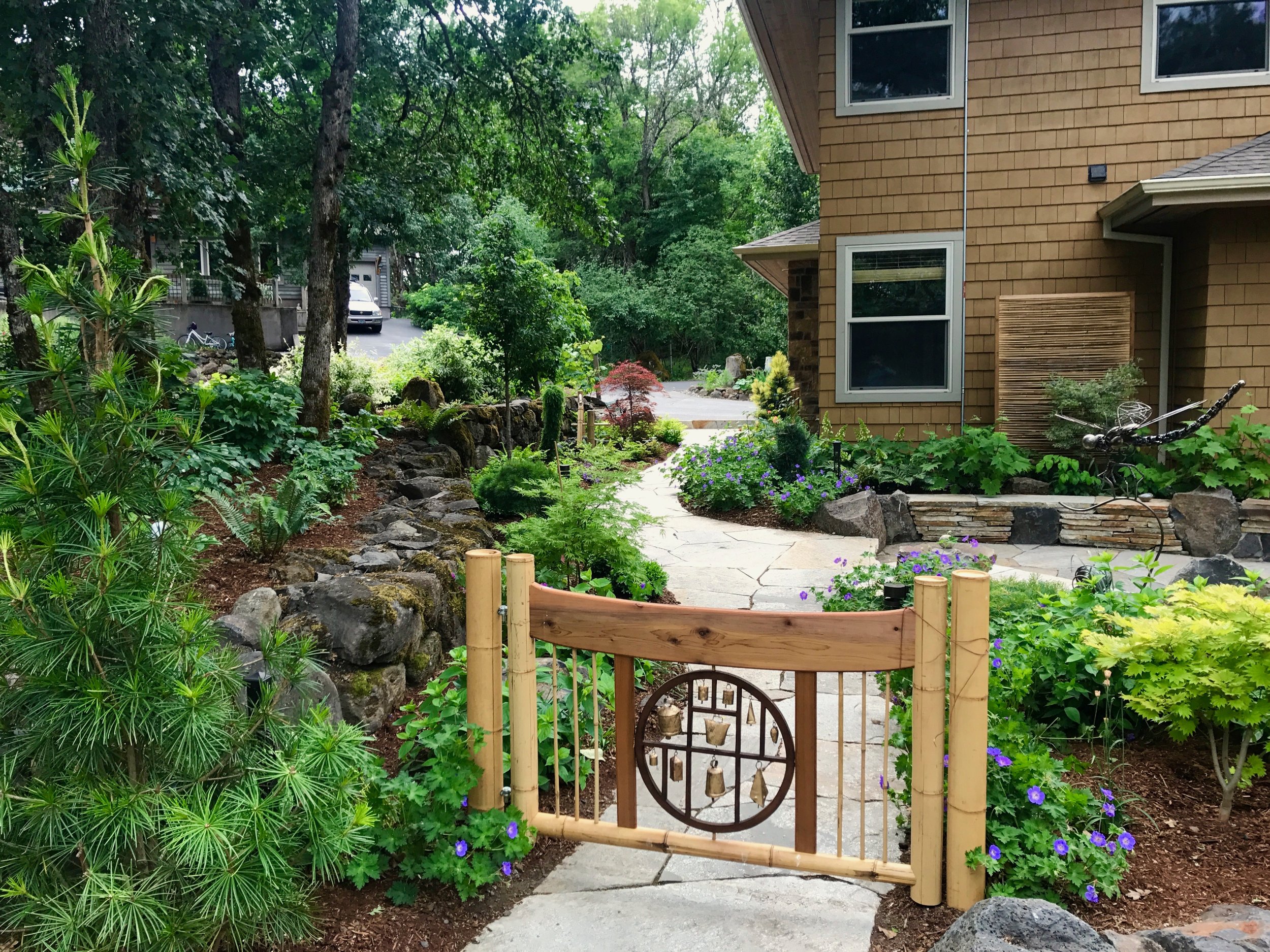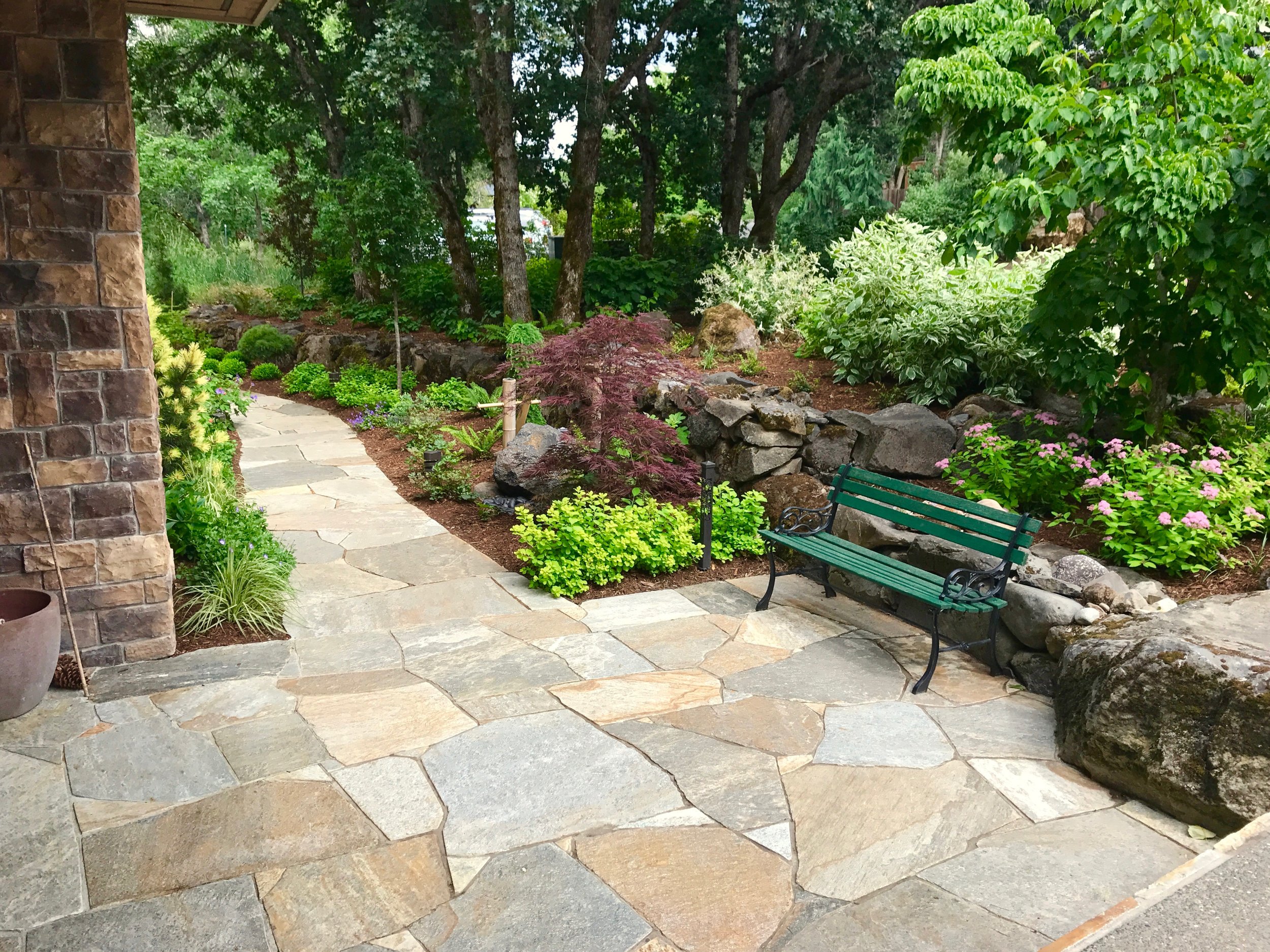Contemplative & Asian Gardens
Contemplative Gardens exude calmness and peace. They offer a welcome retreat for the mind and spirit, and allow the visitor to reflect inward.
Design Considerations
-
Can consist of a small outdoor space, or embrace a complete landscape or park. Water, rocks, and enclosure / privacy are important elements. Running or gurgling water creates a symphony of sounds, is soothing to the mind, and masks external noise. Dry Gardens simulate water, and allow the mind to quiet and expand. While different garden styles may be utilized, a well-designed contemplative garden is a comfort to the mind and spirit.
-
The practice of Feng Shui is an ancient Chinese system of aesthetics, interpreting the laws of heaven (astronomy) and earth (geology) for practical use. Elements of Garden Feng Shui can be incorporated into any garden design. The goal is to improve one’s life through the positive, natural energy flow of Chi (Qi), and to ensure that the quality of the energy surrounding your home is balanced and beneficial.
-
These are a form of contemplative garden. Japanese and Chinese garden design arranges garden elements to reflect the contemplative mind. Often nature or natural features are recreated in a smaller space. The intent is to inspire inner harmony through balanced, outer beauty.
-
Typically, the plant palette is restricted in a Contemplative Garden, and displays subtle colors. Flower bursts in spring, such as Flowering Cherries, Azaleas, Magnolias, and fall foliage colors are frequently included as visual, seasonal highlights.
This gorgeous gate inviting into the Asian-inspired shade garden was created by the client
Sunken stone patio surrounded by lush shade plantings, Hood River. The thick Bluestone riser sections double as seats
The entry landing to the Asian-inspired garden was veneered with the same Quartzite stone as the dry-laid path and patio floor
At this B&B in south Hood River, guests are invited to relax and enjoy the stunning view
The peaceful Rose Garden room at Hospice of the Gorge, Hood River, one year after planting
A series of garden rooms along the strolling path culminate in the Zen Garden, Hospice of the Gorge







